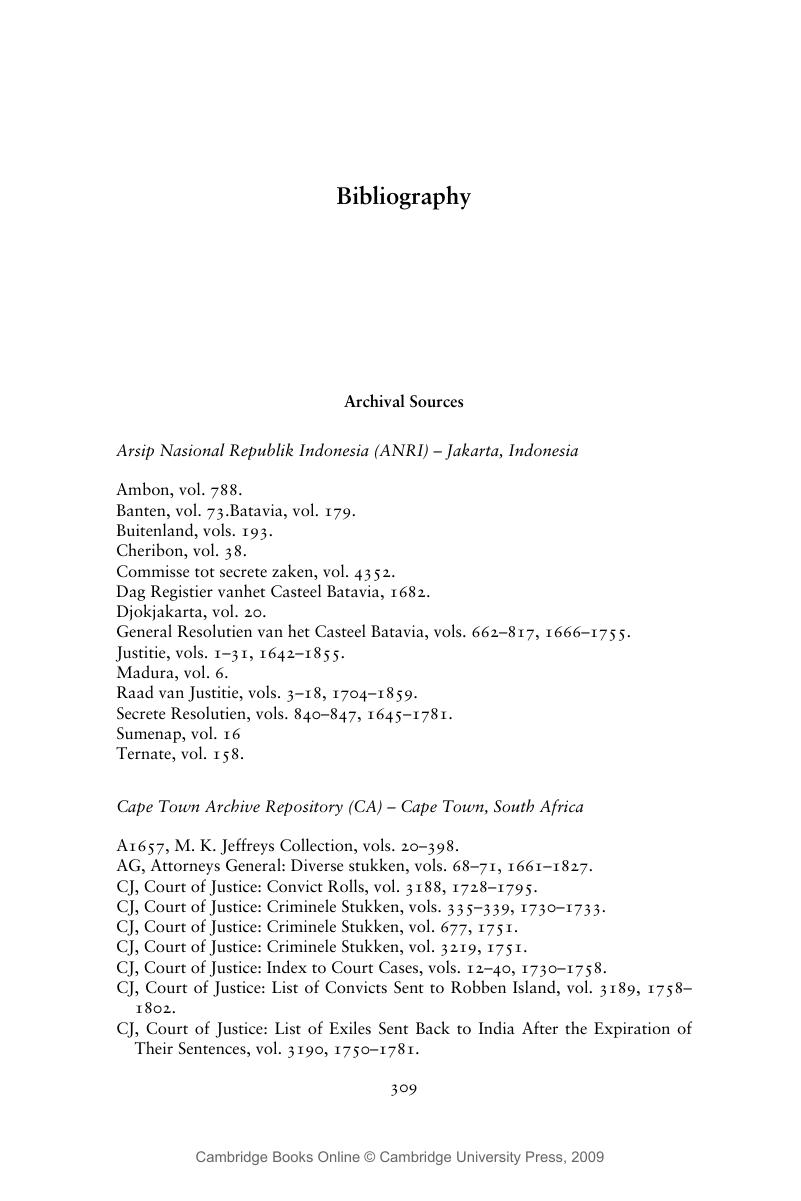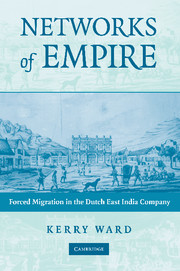Book contents
- Frontmatter
- Contents
- List of Maps
- Acknowledgments
- 1 Networks of Empire and Imperial Sovereignty
- 2 The Evolution of Governance and Forced Migration
- 3 Crime and Punishment in Batavia, circa 1730 to 1750
- 4 The Cape Cauldron: Strategic Site in Transoceanic Imperial Networks
- 5 Company and Court Politics in Java: Islam and Exile at the Cape
- 6 Forced Migration and Cape Colonial Society
- 7 Disintegrating Imperial Networks
- Bibliography
- Index
- VOC Shipping Networks
- References
Bibliography
Published online by Cambridge University Press: 30 July 2009
- Frontmatter
- Contents
- List of Maps
- Acknowledgments
- 1 Networks of Empire and Imperial Sovereignty
- 2 The Evolution of Governance and Forced Migration
- 3 Crime and Punishment in Batavia, circa 1730 to 1750
- 4 The Cape Cauldron: Strategic Site in Transoceanic Imperial Networks
- 5 Company and Court Politics in Java: Islam and Exile at the Cape
- 6 Forced Migration and Cape Colonial Society
- 7 Disintegrating Imperial Networks
- Bibliography
- Index
- VOC Shipping Networks
- References
Summary

- Type
- Chapter
- Information
- Networks of EmpireForced Migration in the Dutch East India Company, pp. 309 - 330Publisher: Cambridge University PressPrint publication year: 2008



